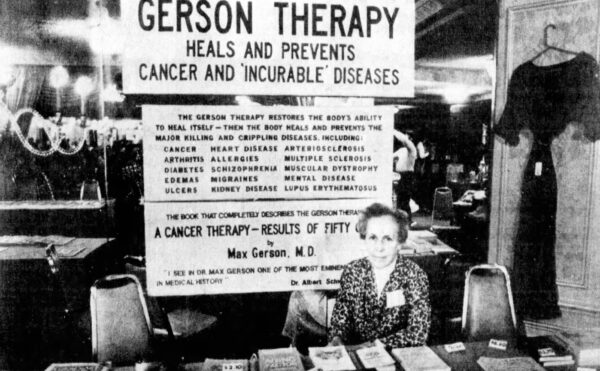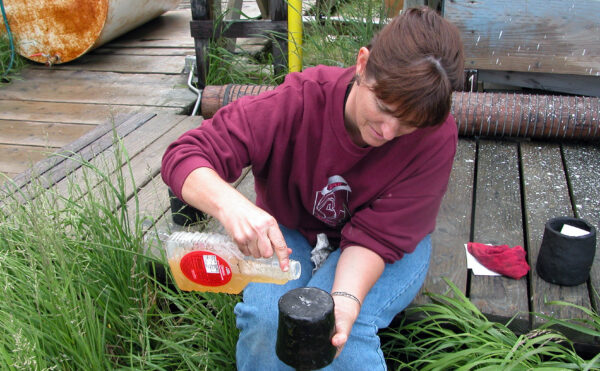Confusing tests, worried grown-ups, the looks of concern on the faces of parents and teachers—these are some of Collin Diedrich’s earliest memories of school. By the end of Diedrich’s first-grade year, his teacher was concerned enough about his progress to urge his parents to hire a reading tutor for the summer. “I always just wanted to learn more, but . . . words are just hard for me, and they were really hard back then,” said Diedrich in a recent interview with our Center for Oral History. It wasn’t just reading and spelling either. By third grade he was having panic attacks sparked by timed multiplication tests. “It was a nightmare,” Diedrich recalled. “I just don’t process information that fast. I knew it, but I didn’t really know or understand why.”
Today, Diedrich is 35 and holds a PhD in molecular virology and microbiology. He studies the connections between HIV and tuberculosis. He is also breaking down the negative assumptions and biases that surround learning and intellectual disabilities in practitioners of science, technology, engineering, and medicine (or STEM). But the road ahead is not an easy one. Delving into Diedrich’s life history highlights how emphasizing intellectual achievement and scientific “genius” is unnecessary, harmful, and exclusionary.
Have you heard of the “STEM pipeline”? The pipeline metaphor goes something like this: a kid goes in one end of the “pipeline” in elementary school and begins building the math and science skills necessary to move further along the pipe. If successful, the student majors in a scientific subject in college, then proceeds to specialized training, and ultimately exits the pipeline as a scientific worker. There are numerous shortcomings to the pipeline model, not the least of which is that it puts immense pressure on young kids, who often get marked early on as being either “good” or “bad” at science and math. Some kids are also unable to move along the “pipe” because they lack access to high-level math and science classes at a young age. And for those whose learning skills or styles fall outside the mainstream, learn differently, this pipeline process can push them out of STEM long before they’ve even had a chance to obtain the diagnoses, help, strategies, skills, and confidence they need to be successful in reading, math, and science.
Even those, such as Diedrich, who manage to cope and even thrive in school often do so only by learning (through great effort and the mobilization of personal resources) to conform to the academic expectations of parents, teachers, and fellow scientists. For Diedrich his parents’ advocacy, understanding, and support throughout his early education was crucial to his early diagnosis with a learning disability. Because his parents were white and middle class, they were able to afford private testing and tutoring services, even when the school district initially refused to provide them. These additional supports equipped Diedrich with the tools he needed to stay in the pipeline but did little to improve STEM education more broadly. Rather than building a more flexible and inclusive educational system, tutors and teachers simply asked Diedrich to work harder and longer than his peers.
Those who make it to the other side of the STEM pipeline are esteemed not necessarily because they have mastered the scientific method and received advanced degrees but because we assume they must be exceptionally smart to have done so. This assumption of genius and inborn talent is so pervasive that it acts on those outside academia, affecting every middle school girl who has ever said (or heard) that she’s “just not good at math.” It masks real inequalities in access and education, and it ignores what it means to participate in STEM.
Research over the last several decades has repeatedly demonstrated that “successful” participation in STEM requires comprehending the ways that privilege, talent, identity, politics, family, history, community, opportunity, support, and interest (to name just a few) intersect in every person’s life. Scientists have always relied in some way on their social and political position to mobilize support for their work, from the days of patronage in the courts of Renaissance Europe to the streams of government and industrial funding in the 20th century. Scientists also rely on the labor—intellectual, emotional, and physical—of their families, their communities, and their institutions. Contrary to what the Nobel Prize might suggest, science is never the product of a lone, isolated, self-sufficient genius, and it takes much more than intellect to make a scientist.
Collin Diedrich’s oral history helps us reconsider how we think about learning differences, cognitive diversity, and the possibilities of a truly inclusive model of STEM, one that has abandoned the cruel and dysfunctional pipeline metaphor. What if the scientific community became more open to different ways of knowing? We usually identify researchers with PhDs as the most noteworthy workers in STEM, but what if we treated lab equipment sales technicians and lab managers as equally valuable?
These are some of the questions being examined by researchers working at the intersection of science and disabilities of the mind. Ashley Taylor, a disability studies and education researcher, writes that people labeled with cognitive or intellectual disabilities are often assumed, by virtue of their diagnosis, to be non-knowers, people who should not be given access to scientific training, tools, and spaces. But, she points out, there is no real basis for this assumption. In the Harvard Educational Review, Taylor asks her readers to consider how this belief excludes a diverse range of people from doing science. In a post–Stephen Hawking era there are few in the scientific community who would openly scoff at a scientist in a wheelchair. Yet Taylor has been met with laughter from colleagues when discussing the role of people with intellectual disabilities in research.
STEM educators, policy advocates, and employers have long discussed the value of building a scientific workforce that is diverse. But ideas of what diversity means in science have proven pretty narrow. In other words, when most of us think about increasing diversity in STEM, we imagine attracting more scientists who use wheelchairs or more African-American woman researchers. But when they walk (or roll) into the lab, we still expect them to learn, process, and produce knowledge in the same fashion as the person down the hall.
Diedrich has achieved scientific success in the most traditional sense: he worked for years as a postdoctoral researcher in South Africa and the United States, published papers, and conducted original research in his field. His success, however, was the result of extreme self-discipline and sacrifice. In college Diedrich sat in the front row of every class, recorded every lecture, and kept detailed notes on his professor’s lecture slides. And that was only the beginning. “Then I would go to the library or go to my dorm and I would . . . re-listen to the lecture, which would take about twice as long, writing out detailed notes. I would highlight those notes and type those notes out. Then I would go through the book, and I would highlight the book [and] type those notes out, highlight those. Then I [would] have two sets of typed notes [and] I would combine them. Then I would make flash cards from the typed notes.” These efforts paid off for Diedrich, who earned some of the highest marks in his undergraduate biology classes. Diedrich recounted these experiences with great enthusiasm and an almost palpable love for what he does.
Still, one is left wondering if things really have to be this way. Today, Diedrich is one of a growing number of people in STEM who are openly challenging the myth that a successful career in science requires such a harrowing, burdensome, standardized, and isolating approach. We should question why STEM education is designed to arbitrarily privilege things, such as learning speed and short-term memory, when these skills are not actually required for most scientific work, even at the PhD level. Furthermore, scholars such as Taylor prompt us to question the common belief that science ought to be reserved only for those rare individuals who possess an innate, superior, and easy genius.
The stories shared by Diedrich and all the participants in the Institute’s ongoing Science and Disability Project offer us the chance to consider new and more expansive ways of thinking about what is really required to work in STEM, what those paths and careers can and do look like, and how we might begin to reimagine our efforts to build a more inclusive and diverse community of scientists as we head further into the 21st century.




